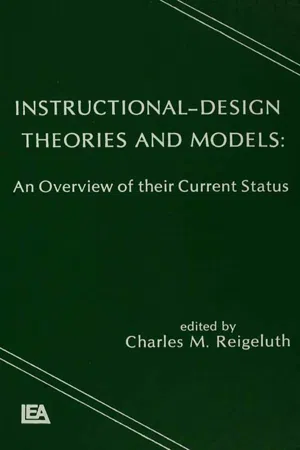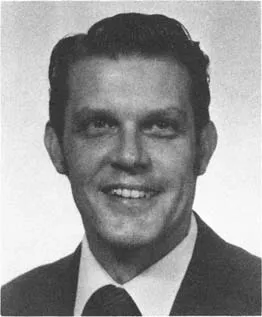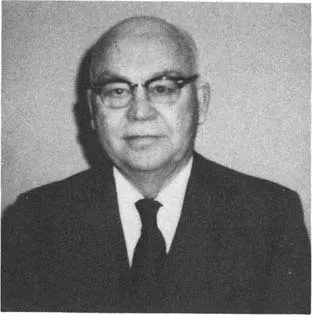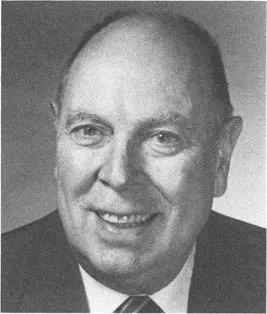
eBook - ePub
Instructional Design Theories and Models
An Overview of Their Current Status
This is a test
- 512 pages
- English
- ePUB (mobile friendly)
- Available on iOS & Android
eBook - ePub
Book details
Book preview
Table of contents
Citations
About This Book
Instructional Design Theories and Models is a thorough yet concise overview of eight of the most comprehensive and best-known attempts to integrate knowledge about effective and appealing instruction. Chapters were written by the original theorists to provide a more accurate and behind-the-scenes look at the theories' development. Instructional Des
Frequently asked questions
At the moment all of our mobile-responsive ePub books are available to download via the app. Most of our PDFs are also available to download and we're working on making the final remaining ones downloadable now. Learn more here.
Both plans give you full access to the library and all of Perlego’s features. The only differences are the price and subscription period: With the annual plan you’ll save around 30% compared to 12 months on the monthly plan.
We are an online textbook subscription service, where you can get access to an entire online library for less than the price of a single book per month. With over 1 million books across 1000+ topics, we’ve got you covered! Learn more here.
Look out for the read-aloud symbol on your next book to see if you can listen to it. The read-aloud tool reads text aloud for you, highlighting the text as it is being read. You can pause it, speed it up and slow it down. Learn more here.
Yes, you can access Instructional Design Theories and Models by Charles M. Reigeluth in PDF and/or ePUB format, as well as other popular books in Pedagogía & Educación general. We have over one million books available in our catalogue for you to explore.
Information
Unit II
MODELS AND THEORIES OF INSTRUCTION
This unit describes integrative models and theories of instruction. Most of the chapters describe a prescriptive instruction al theory—that is. a set of models and a basis for prescribing which model to use when . Each model integrates a fairly substantial number of strategy components by indicating such thing s as which components should be used together and the order in which those components should be offered to the student. For example, Merrill's Component Display Theory (Chapter 9) prescribes the use of a generality (e .g ., the definition of a concept), instances (e.g. , examples of the concept ), and practice (e. g., experience in classifying new instances as to whether or not they are examples of the concept), as well as prescriptions for the optimal characteristics that each of these components should have. To the extent that these prescriptions incorporate the knowledge generated by different researchers from different theoretical orientations, they represent an integrative model of instruction.
Some models and theories in this unit appear to make no attempt to integrate the work of other theorists and researchers. Other theories attempt only to integrate the work of theorists or researchers who are within a relatively narrow part of the entire discipline (e.g., only the work of behaviorist researchers and theorists or only that of cognitive researchers and theorists). Finally, some theories have attempted to integrate the work of a broad spectrum of researchers and theorists.
It should be noted that this unit is not an extensive representation of the existing models and theories of instruction: Many have been left out due to space limitations. Our intention has been to include the most comprehensive yet substantive ones that are still under development, but even here we may not have been aware of some models or theories that we would otherwise have included. For descriptions of some that we have not included here, see Snelbecker's Learning Theory, Instructional Theory, and Psychoeducational Design and Joyce and Well's Teaching Models. In addition, we would like to point out Markle's excellent work on how to teach concepts.
It becomes apparent as you read the chapters in this unit that different models and theories are designed to achieve different kinds of goals, such as the acquisition of verbal information or the mastery of cognitive strategies. In fact, this may account for the major differences among most of the models, especially between cognitively oriented and behaviorally oriented ones. Discounting for the differences in goals among the various models and theories in this unit, there are great similarities among those models and theories, even though they might be from different theoretical orientations. Footnotes have been used to draw attention to some of those similarities.
The chapters in this unit are arranged in roughly the order in which the models' and theories' major development occurred, which means that behaviorally oriented ones tend to come first, followed by cognitively oriented ones, and finally by multi perspectived ones. The highly integrative Gagné-Briggs theory is the major exception to the rule.
In Chapter I we distinguished between micro strategies, which are methods for teaching a single idea, and macro strategies, which are methods that relate to teaching a number of ideas. Although most of the chapters in this unit describe both kinds of strategies to some extent, all tend to focus mainly on one of the two. The Landa, Scandura, and Reigeluth–Stein chapters all tend to emphasize macro strategies (primarily the selection and sequencing of content), whereas the Gropper, Collins–Stevens, and Merrill chapters tend to focus mainly on micro strategies (e.g., ways to facilitate the acquisition of a single concept or principle). For an overview of some of the major characteristics of each model or theory, see the foreword at the beginning of each chapter.
A recurring theme of this book is the need to draw from work in all theoretical orientations. We need a knowledge base that can prescribe optimal methods for achieving the full range of desired outcomes (i.e., goals) under different conditions (e.g., for different types of content, students, and constraints). Cognitively oriented instructional theories and models have tended to focus on optimal methods for achieving certain kinds of goals (such as “learning how to discover”) whereas behaviorally oriented ones have tended to focus on optimal methods for achieving other kinds of goals (usually content-specific associations, generalizations, and discriminations). Hence, a prescriptive instructional theory must (in order to be truly comprehensive) be able to prescribe both kinds of instructional methods (plus humanistic ones such as Rogers'), depending on the desired outcomes.
However, there is also an area of overlap between different orientations—where they both prescribe methods for achieving the same kinds of goals. To what extent can method components from one orientation be integrated with method components from another? Some people have argued that a theorist must operate within a single theoretical perspective (e.g., behavioral, cognitive, or humanistic), but others have disagreed. Perhaps a single perspective is best for generating descriptive theory, whereas a multiperspectived approach is best for generating the most useful prescriptive theory (see Chapter 12 for a discussion of this issue). As instructional researchers, theorists, and developers who are objectively searching for the best methods for achieving desired outcomes, we must approach this important question with a truly open mind. It is hoped that a careful analysis of the chapters in this unit will help reveal the answer.
| 4 | Contributions of Gagné and Briggs to a Prescriptive Model of Instruction |

Dennis T. Aronson
Dennis Aronson earned his bachelor's degree in history at Pomona College in Claremont, California and his master's in education at the American University of Beirut in Lebanon. He took his doctorate in instructional design and development at the Florida State University.
Dr. Aronson's teaching experience includes service in Afghanistan as a Peace Corps Volunteer English teacher and in Saudi Arabia as an instructor for Saudi Arabian Airlines. He was on the faculty of the American University of Beirut, where he developed and taught courses on methods of teaching English as a foreign language.
More recently Dr. Aronson was on the faculty of the West Virginia College of Graduate Studies, where he developed and taught courses in the area of instructional technology.
Dr. Aronson now has his own firm, Aronson Communications, specializing in instructional design and audiovisual production. He has developed education and training materials for the West Virginia Department of Education, the West Virginia College of Graduate Studies, and other organizations in West Virginia.
While at Florida State University, Dr. Aronson worked closely with Dr. Leslie Briggs, who was his doctoral advisor, and Dr. Robert Gagné, for whom he was a teaching assistant.

Leslie J. Briggs
Leslie J. Briggs received his Ph.D. degree in psychology from Ohio State University in 1948, after serving three years during World War II as a classification specialist in the Army. From 1948–51 he served as assistant professor of psychology at the University of Hawaii.
His career as an instructional designer began in the Air Force Personnel and Training Research Center at Lowry Air Force Base, Colorado, where he designed training devices and training programs, and conducted research in motivation, morale, and training methods, from-1951–57. From 1957–59 he designed training plans for maintenance of electronic systems for Hughes Aircraft Company.
From 1959–67 he served as director of the Instructional Methods Program at the American Institutes for Research in Palo Alto, California, where he published the first of a series of monographs on the design of instruction.
In 1968 he became professor of instructional systems design in the Department now called Educational Research, Development, and Foundations, at Florida State University. In that position, he has taught instructional design courses, continued writing monographs and textbooks in instructional design, and has directed doctoral dissertations in that area.
Dr. Briggs' research has typically grown out of problems encountered during the development of training programs. For example, in the Air Force, he first designed and evaluated training devices and programs, then conducted basic research in variables accounting for their effectiveness. Based on Air Force experience in forecasting training requirements for weapon systems of the future, he became interested in the study of futurism as a way of orienting instructional design efforts to educational objectives and media expected to be appropriate for activities in a future society. His present interest is in helping assure that instructional design models are applied to meet future needs, employing the media of the future.

Robert M. Gagné
Robert M. Gagné is a Professor of Educational Research in the College of Education, Florida State University. He received his undergraduate education at Yale University, and his doctoral degree in experimental psychology from Brown University in 1940. His college teaching career began at Connecticut College for Women. During World War II, he served as an Aviation Psychologist, engaged in the development of tests of motor and perceptual functions in the classification of aircrew.
He returned to college teaching at Pennsylvania State University and again at Connecticut College, where he also carried out a research project on the learning and transfer of skills. For eight years thereafter, he held positions as Technical Director in two Air Force Laboratories engaged in research programs dealing with learning and methods of technical training.
From 19...
Table of contents
- Cover
- Half Title
- Full Title
- Copyright
- Contents
- About This Book
- Suggestions for Reading This Book
- Foreword
- UNIT I INSTRUCTION: WHAT THE DISCIPLINE IS LIKE
- UNIT II MODELS AND THEORIES OF INSTRUCTION
- UNIT III COMMENTARY
- Concluding Remarks
- Author Index
- Subject Index